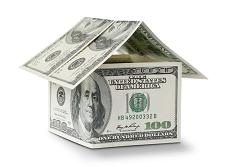
Tax credits equal to 10 percent of the cost can be earned for the installation of new insulation, including exterior windows and doors or energy-efficient HVAC equipment. It's retroactive and includes qualifying equipment installed after December 31, 2011. There is a cumulative maximum credit of $500 between the years 2005 and 2013, so you'll need to keep that in mind if you have used this credit before.
There are also varying caps on tax credits for individual projects:
Insulation, exterior windows and doors
Insulation must meet the criteria established by the 2009 International Energy Conservation Code. Exterior windows and doors must be certified by the federal Energy Star program. Additionally, they must be expected to last for at least five years, and there's a maximum credit of $200 on windows. The 10 percent credit applies only to the cost of materials.
Furnaces
There's a maximum $150 tax credit for the installation of a new furnace. It must be fueled by natural gas, propane or oil and have a minimum AFUE (annual fuel utilization efficiency) of 95 percent. Additionally, you can receive a credit of up to $50 on an advanced main circulating fan if it doesn't use more than 2 percent of the energy the furnace uses.
Central air conditioners and electric heat pumps
If they meet the highest efficiency level established by the Consortium for Energy Efficiency, both are eligible for a tax credit of up to $300.
Water heaters
Up to a $300 credit is also available for new water heaters. If it's a natural gas, propane or oil water heater, it must have at least a 90 percent thermal-efficiency rating or 0.82 energy factor. A minimum energy factor of 2.0 is required for electric heat pump water heaters.
For more information about tax credits for energy efficient additions to your home, or if you need any other HVAC advice, please contact Rodenhiser Plumbing, Heating & Air Conditioning. We've proudly served the Route 495/128 area of Massachusetts since 1928.